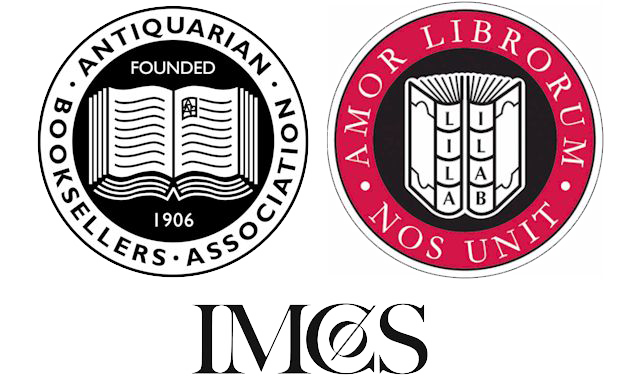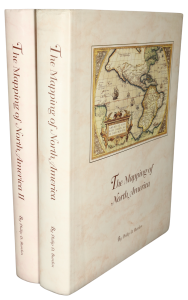Rare Maps and Prints
- World & Celestial
- North America
- West Indies, South & Central America
- British Isles
- British Isles
- English counties
- Large-scale
- Bedfordshire
- Berkshire
- Buckinghamshire
- Cambridgeshire
- Cheshire
- Cornwall
- Cumberland
- Derbyshire
- Devon
- Dorset
- Durham
- Essex
- Gloucestershire
- Hampshire
- Herefordshire
- Hertfordshire
- Huntingdonshire
- Islands
- Kent
- Lancashire
- Leicestershire
- Lincolnshire
- Middlesex
- Norfolk
- Northamptonshire
- Northumberland
- Nottinghamshire
- Oxfordshire
- Rutland
- Shropshire
- Somerset
- Staffordshire
- Suffolk
- Surrey
- Sussex
- Warwickshire
- Westmoreland
- Wiltshire
- Worcestershire
- Yorkshire
- Wales
- Scotland
- Ireland
- Western Europe
- Eastern Europe
- Middle East
- Africa
- Asia
- Australasia & Pacific
- Decorative Prints
- Title Pages
Mr. Philip D. Burden
P.O. Box 863,
Chalfont St. Giles, Bucks HP6 9HD,
UNITED KINGDOM
Tel: +44 (0) 1494 76 33 13
Email: enquiries@caburden.com
A very rare separately issued map of ‘The Oregon Districts and Adjoining Country’, first published in 1843. This is an example of the revised and updated second state dated April 10th, 1845, with significant improvements in the Willamette Valley and elsewhere. James Wyld’s map of the Oregon Territory is a fascinating historical and cartographic document. It is the only large format map of the Oregon Territory prepared by the British in the critical final years before the question of ownership would finally be resolved by treaty in 1846. The map incorporates a significant amount of British and American information, including both the most well-known sources such as Lewis & Clark, the Hudson Bay Company and others, as well as more obscure details, such as John Colter’s route through Wyoming in 1807.
While the American maps of the region, including Burr’s map of Oregon Territory (1833 and after), the Washington Hood Map (1838) and Wilkes Map (1841) would also stamp a uniquely American imprint on the cartographic content of the region, the British were independently developing their own cartographic vision. Beginning with the manuscript maps of David Thompson in 1808 and Peter Skene Ogden, the British were actively exploring and mapping the region, primarily under the auspices of the Hudson Bay Company and North West Company. In 1834, John Arrowsmith’s map of British North America would provide the best available information derived from these manuscript sources and other printed sources. Similarly, the French vision of the western parts of America by Duflot du Mofras reflected a combination of European and American sources for the mapping of the area impacted by the so-called Oregon Question.
From the late 1700’s the British, Spanish, Russians and Americans explored the region of the north west with an eye to bolstering claims to the region. From 1818 onward, the British and Americans each occupied the region under an agreement of Joint Occupation, while Diplomats from each country tried unsuccessfully to negotiate a boundary treaty. While the parties had agreed to the 49th Parallel as the division between the United States and Canada for the lands east of the Rocky Mountains, no fixed agreement could be reached for the western portion leading to the Pacific Ocean. Following the Adams-Onis Treaty of 1819, Spain relinquished its claims in the region. The Russian claims were also fading.
The American claim followed on settlement in the area and missionary activity. The British relied on the Hudson Bay Company and its fur trading led from its headquarters at Vancouver, Washington. The issue came to a head following the annexation of Texas when American expansionism turned to Oregon. Expansion into the Columbia Basin became important to American Politics. The British by then had a regular naval presence. By 1845 and 1846, the British and American interests had nearly resulted in War. At least five British naval vessels were operating in the North Pacific and the British went so far as to formulate a war plan. British commercial interests in the region were however being increasingly trumped by the importance of maintaining a trading relationship with the United States. The Oregon Treaty was ratified in June 1846, whereby the 49th Parallel became the primary boundary between the regions. The British were to retain all of Vancouver Island. It was not until 1871 that a final boundary between the two nations would be clarified. The San Juan Islands were awarded to the Americans in an arbitration led by Kaiser Wilhelm I of Germany.
James Wyld (1812-1887) was the son of James Wyld who had been an apprentice to William Faden, became Geographer to His Majesty George IV and later William IV. He was a founder member of the Royal Geographic Society. He introduced lithography into mapmaking in 1812. His son of the same name became geographer to Queen Victoria and Prince Albert. Wyld’s map of Oregon is of the utmost rarity. It was unknown to Wheat and the map did not appear in the Streeter Sale. There are no published appearances of the map on the market in standard references since the 1940s. A single copy is located by OCLC in the collection of the University of British Columbia Library and 3 recorded examples of this later edition of 1845 (British Library, University of Alberta & Yale).
As mentioned before the first issue of this map was in 1843. Amongst the most notable differences are the Willamette Valley is completely blank in the 1843 edition. In this 1845 issue, the topographical features are added with remarkable detail, much of which relates to the settlement of the Valley by pioneers of the Oregon Trail, who began to arrive in 1843.
Mount Hood and Mount Jefferson are added and Fremonts or South Pass’ added on 110 parallel at bottom. Fort Boise is named on ‘Lewis’s R. South Fork’ west of Shallett Lake. The Clamet (Klamath) River and tributaries are significantly revised, with the southern tributary now called Too-too-tiu-na or Klamet River. Several new rivers are added east of Ft. Thompson. The map contains two inserts: ‘Map to Shew the Communications from the N. W. Coast of America to China & Australia’ and ‘British Possessions in America’. Not in Phillips. Smith 4482; Wheat Atlas of Exploration p. 158.
While the American maps of the region, including Burr’s map of Oregon Territory (1833 and after), the Washington Hood Map (1838) and Wilkes Map (1841) would also stamp a uniquely American imprint on the cartographic content of the region, the British were independently developing their own cartographic vision. Beginning with the manuscript maps of David Thompson in 1808 and Peter Skene Ogden, the British were actively exploring and mapping the region, primarily under the auspices of the Hudson Bay Company and North West Company. In 1834, John Arrowsmith’s map of British North America would provide the best available information derived from these manuscript sources and other printed sources. Similarly, the French vision of the western parts of America by Duflot du Mofras reflected a combination of European and American sources for the mapping of the area impacted by the so-called Oregon Question.
From the late 1700’s the British, Spanish, Russians and Americans explored the region of the north west with an eye to bolstering claims to the region. From 1818 onward, the British and Americans each occupied the region under an agreement of Joint Occupation, while Diplomats from each country tried unsuccessfully to negotiate a boundary treaty. While the parties had agreed to the 49th Parallel as the division between the United States and Canada for the lands east of the Rocky Mountains, no fixed agreement could be reached for the western portion leading to the Pacific Ocean. Following the Adams-Onis Treaty of 1819, Spain relinquished its claims in the region. The Russian claims were also fading.
The American claim followed on settlement in the area and missionary activity. The British relied on the Hudson Bay Company and its fur trading led from its headquarters at Vancouver, Washington. The issue came to a head following the annexation of Texas when American expansionism turned to Oregon. Expansion into the Columbia Basin became important to American Politics. The British by then had a regular naval presence. By 1845 and 1846, the British and American interests had nearly resulted in War. At least five British naval vessels were operating in the North Pacific and the British went so far as to formulate a war plan. British commercial interests in the region were however being increasingly trumped by the importance of maintaining a trading relationship with the United States. The Oregon Treaty was ratified in June 1846, whereby the 49th Parallel became the primary boundary between the regions. The British were to retain all of Vancouver Island. It was not until 1871 that a final boundary between the two nations would be clarified. The San Juan Islands were awarded to the Americans in an arbitration led by Kaiser Wilhelm I of Germany.
James Wyld (1812-1887) was the son of James Wyld who had been an apprentice to William Faden, became Geographer to His Majesty George IV and later William IV. He was a founder member of the Royal Geographic Society. He introduced lithography into mapmaking in 1812. His son of the same name became geographer to Queen Victoria and Prince Albert. Wyld’s map of Oregon is of the utmost rarity. It was unknown to Wheat and the map did not appear in the Streeter Sale. There are no published appearances of the map on the market in standard references since the 1940s. A single copy is located by OCLC in the collection of the University of British Columbia Library and 3 recorded examples of this later edition of 1845 (British Library, University of Alberta & Yale).
As mentioned before the first issue of this map was in 1843. Amongst the most notable differences are the Willamette Valley is completely blank in the 1843 edition. In this 1845 issue, the topographical features are added with remarkable detail, much of which relates to the settlement of the Valley by pioneers of the Oregon Trail, who began to arrive in 1843.
Mount Hood and Mount Jefferson are added and Fremonts or South Pass’ added on 110 parallel at bottom. Fort Boise is named on ‘Lewis’s R. South Fork’ west of Shallett Lake. The Clamet (Klamath) River and tributaries are significantly revised, with the southern tributary now called Too-too-tiu-na or Klamet River. Several new rivers are added east of Ft. Thompson. The map contains two inserts: ‘Map to Shew the Communications from the N. W. Coast of America to China & Australia’ and ‘British Possessions in America’. Not in Phillips. Smith 4482; Wheat Atlas of Exploration p. 158.
WYLD, James
Map of the Oregon Districts and the Adjacent Country
London, 10 April 1845
505 x 705 mm., in early outline colour, with two lower margin fold splits professionally repaired, otherwise a very good example.
Stock number: 8824
SOLD






